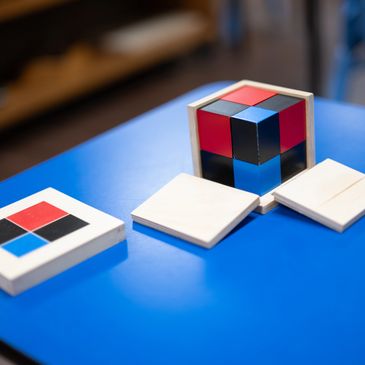
Pedagogy
Your Environment
Our Environment
At Sunya Montessori, we welcome children from 6 months to 2 years, with the intention to gradually expand our space to support children up to 6 years. Our work is deeply rooted in the Montessori philosophy — particularly the guiding principle of “follow the child.” We believe every child arrives with an inner drive to learn and grow. Tha
At Sunya Montessori, we welcome children from 6 months to 2 years, with the intention to gradually expand our space to support children up to 6 years. Our work is deeply rooted in the Montessori philosophy — particularly the guiding principle of “follow the child.” We believe every child arrives with an inner drive to learn and grow. That’s why we do not follow a rigid daily schedule. Instead, we offer a carefully prepared environment where children are free to explore, observe, and engage at their own pace. Some may choose to work with materials, others may simply watch — and both are equally valid paths to learning. Observation is a powerful tool for young minds, and we honor the ways each child chooses to take in the world.
Our classroom is thoughtfully equipped with developmentally appropriate Montessori materials, including:
- Psycho-Sensory Motor Development (PSMD) materials – supporting the integration of body and mind through movement and coordination
- Language materials – offering rich opportunities to build vocabulary, listen, and express
- Practical life activities – such as caring for themselves and their environment, which foster independence, responsibility, and a sense of belonging
Everything in our space is designed to support concentration, independence, and adaptation — key qualities that form the foundation for lifelong learning.
At Sunya, we don’t rush children through milestones. We trust them, respect their rhythms, and offer a space where they can grow into their most authentic selves.
We maintain intentionally low adult-to-child ratios to ensure every child receives the care, attention, and observation they deserve. For infants 6 months to 1 year, we offer a 1:3 ratio, and for children 1 to 2.5 years, the ratio is 1:6. This allows us to truly observe, respond, and support each child’s individual rhythm and needs — a key tenet of Montessori education.

Our Environment
Your Environment
Our Environment
At Sunya Montessori, we provide a safe, clean, and developmentally rich environment that meets the highest standards set by the international Montessori community. Every detail in our space is designed to support young children as they explore the world with curiosity and confidence.
We proudly source our materials from Nienhuis Montessor
At Sunya Montessori, we provide a safe, clean, and developmentally rich environment that meets the highest standards set by the international Montessori community. Every detail in our space is designed to support young children as they explore the world with curiosity and confidence.
We proudly source our materials from Nienhuis Montessori, the authorized manufacturer of Montessori materials since 1929. These beautifully crafted tools are designed to support hands-on learning, concentration, independence, and sensory exploration — aligning with the vision of Dr. Maria Montessori.
We understand that children, especially in the earliest years, explore with all their senses — including mouthing materials. That’s why we take stringent safety measures:
- All materials are age-appropriate and free of choking hazards
- Everything is sanitized regularly using natural, child-safe cleaning agents
- We uphold exceptional standards of cleanliness and hygiene throughout our space
Our classroom is not just clean and safe — it is also warm, inviting, and alive with purpose. It is a space where children feel respected, and where their natural drive to explore and learn is honored every day.

Your Environment
Your Environment
Your Environment
At Sunya Montessori, we believe support for the child begins with support for the parents. We’re here not just for your little one — we’re here for you.
Whether you're navigating the physical or emotional transitions of early parenthood, setting up your home environment, training your nanny or household help, or just trying to figure out
At Sunya Montessori, we believe support for the child begins with support for the parents. We’re here not just for your little one — we’re here for you.
Whether you're navigating the physical or emotional transitions of early parenthood, setting up your home environment, training your nanny or household help, or just trying to figure out what’s “normal” — you are not alone.
We offer gentle, experience-based guidance on:
- What to expect at different stages of development
- Creating a Montessori-aligned home environment
- Choosing and using essentials like car seats, feeding tools, and sleep setups
- Understanding both the physical and psychological needs of young children
Got a question? We’re here.
Feeling doubtful? We’re here.
Totally overwhelmed? Still here.
You ask — we support.
Because parenting isn’t meant to be done alone.
This website uses cookies.
We use cookies to analyze website traffic and optimize your website experience. By accepting our use of cookies, your data will be aggregated with all other user data.